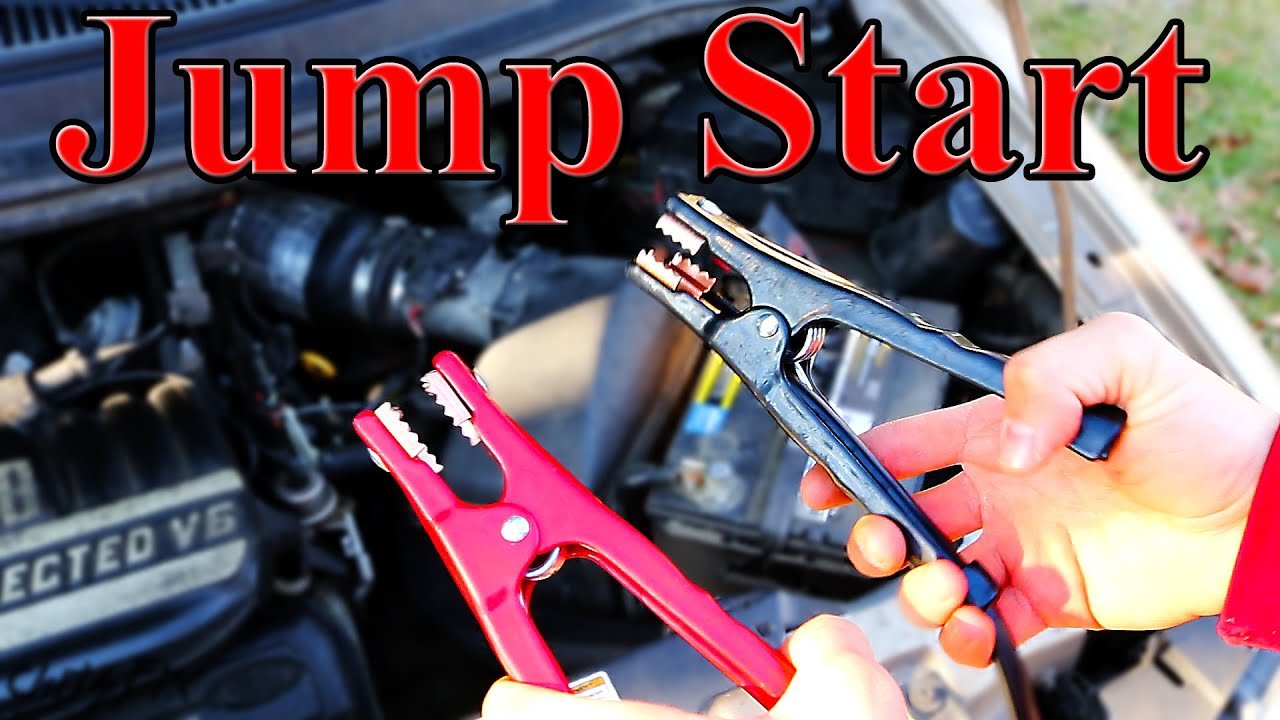- Hours Of Operation:Mon-Friday 8am - 6pm
- Towing Service: Open 24/7

Trying to jump-start a dead car battery and hearing nothing but a click can throw your whole day off—especially when you’re in a rush. A dead battery is never convenient, but the good news is that it’s usually easy to fix if you have the right tools and a bit of guidance.
In this friendly, step-by-step guide, we’ll show you exactly how to jump-start a car battery safely and correctly, whether you have another vehicle available or need to rely on a portable jump starter. Let’s get you back on the road with confidence.
Before you can jump-start a car battery, it’s important to gather a few key items. Here’s what you’ll need to do it right and stay safe:
Once you’ve got these items ready, you’re all set to bring your car back to life.
Bonus Tip: Keep a portable jump starter pack in your trunk. It’s a lifesaver if no one’s around to help.
Position both vehicles so their car batteries are within jumper cable reach, but make sure they’re not touching. Turn off both ignitions and engage the parking brakes.
Let the donor car run for 2–3 minutes to give the dead one a chance to charge.
Try starting the dead vehicle. If it cranks up, great! If not, wait a couple more minutes and try again.
Take the clamps off in reverse order of how you connected them. Be careful not to let them touch as you remove them.
Keep the jumped car running for at least 20 minutes or go for a short drive to help recharge the automotive battery.
A portable jump starter is a compact device that can give your battery the boost it needs, no second car required.
Turn the jump starter on according to the manufacturer’s instructions. Most models have an indicator light that tells you when it’s ready.
Try to start your car. If it doesn’t work right away, wait a minute or two and try again.
Once the engine starts, turn off the jump starter and remove the clamps, black first, then red.
Don’t forget to recharge your portable jump starter so it’s ready for next time.
If your battery only died once, it may have just been a dome light left on or cold weather. But if you’re reaching for jumper cables more often than your morning coffee, it’s time to dig deeper.
Common causes include an aging battery (most last 3–5 years), a failing alternator, corroded battery terminals, or even a parasitic drain. A quick visit to us at TCA Auto repair and electrical system check can save you future headaches.
Yes, it’s safe to jump-start a car in the rain! Car batteries are sealed, and the automotive electrical system is grounded, so there’s no shock risk as long as you follow the proper steps.
That said, use common sense: avoid standing in puddles or letting water drip into open components. Stay dry where possible, and you’ll be just fine.
If your car doesn’t start after a few solid tries, or you only hear a clicking noise, it might be more than just a dead battery. It could be an issue with the starter, alternator, or internal wiring.
Also, if your battery looks swollen, is leaking, or you’re stuck without another car or jump starter, it’s time to call roadside assistance or a mobile mechanic.
Most insurance providers and car manufacturers offer 24/7 roadside help. Check your car manual or insurance policy to see what’s available to you. If you’re unsure about any car issues, our transmission repair services can also be consulted for further peace of mind.
Want to avoid this problem altogether? A few simple habits can keep your car battery in great shape:
A portable car battery jump starter is a must-have if you drive less often, live in cold climates, or want peace of mind.
They’re compact, easy to use, and powerful enough to revive your vehicle’s battery without needing another car. Many models also double as phone chargers or emergency flashlights.
For best performance, look for one with at least 1000 peak amps and reverse polarity protection to avoid damage from incorrect connections.
How to jump start a car might seem intimidating at first, but with the right tools, a bit of knowledge, and a calm mindset, it’s a task any driver can handle. Whether you’re using jumper cables and a second car or a portable jump starter, following proper safety steps is key to getting back on the road quickly and safely. And by taking a few simple preventative measures, like maintaining your battery, driving regularly, and keeping emergency gear on hand, you can reduce the chances of being stranded again.
The correct order is:
This sequence ensures safe grounding and minimizes the risk of sparks.
Always hook up the red (positive) clamp first.
Start by connecting the red clamp to the positive terminal of the dead battery, then the positive terminal of the working battery. The black (negative) clamps come next.
You start with the dead car.
Connect the red cable to the dead battery’s positive terminal first, then move to the donor car and connect the other red clamp. After that, attach the black clamps (negative) in the proper order.
Yes, it matters a lot.
Connecting jumper cables in the wrong order can create sparks, damage electrical systems, or even cause battery explosions. Always follow the proper order for safety.
Always connect the positive (+) terminal first, whether you’re jumping the battery or reinstalling one using an installed engine guide or doing basic maintenance. This helps prevent accidental shorts and sparks.